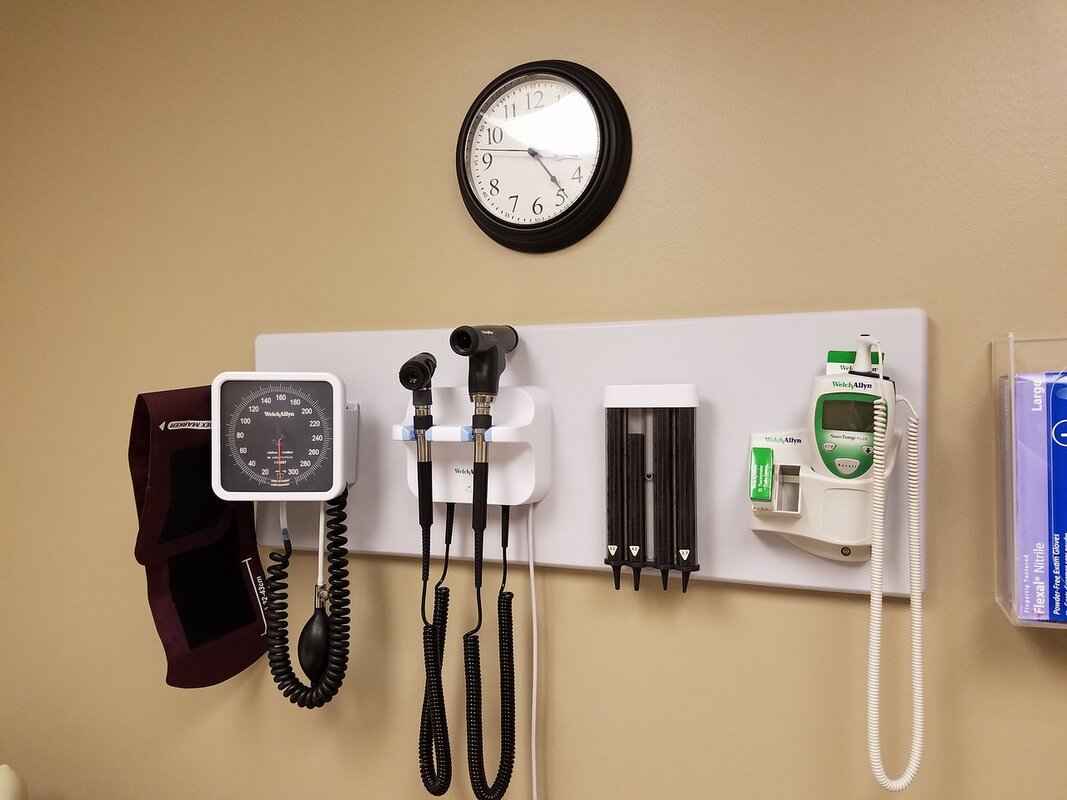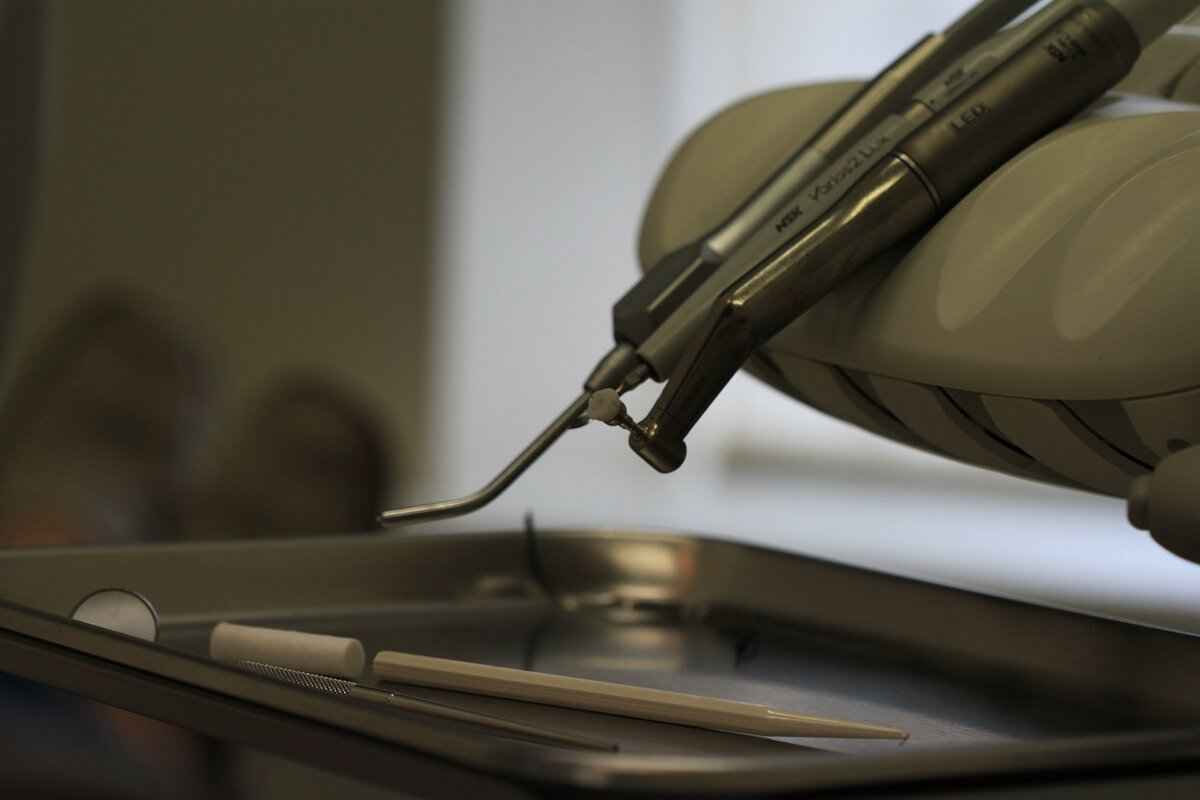This article serves as a detailed guide on how to effectively cold call clinics to secure shadowing opportunities in the medical field. Aspiring healthcare professionals can benefit greatly from practical tips and insights that will enhance their chances of success in this competitive landscape.
Understanding the Importance of Shadowing
Shadowing is an essential experience for those pursuing a career in healthcare. It allows individuals to gain firsthand exposure to clinical environments, observe patient interactions, and understand the day-to-day responsibilities of medical professionals. This exposure can significantly enhance both knowledge and skills, making shadowing a critical component of medical education.
Researching Potential Clinics
Before making any calls, it is vital to conduct thorough research on potential clinics. Understanding their specialties, staff, and patient demographics can help tailor your approach. This not only demonstrates your genuine interest but also allows you to make a more compelling case for why you wish to shadow.
- Identifying Your Interests: Knowing which medical specialties resonate with you can guide your research and help you focus on clinics that align with your career aspirations.
- Exploring Different Specialties: Investigating various medical fields can provide insights into what you might enjoy, aiding in selecting clinics that offer shadowing opportunities in those specific areas.
- Utilizing Online Resources: Websites like Healthgrades and Zocdoc are invaluable for gathering information about clinics, including reviews, specialties, and contact details.
Preparing Your Cold Call Script
Having a well-prepared script can significantly boost your confidence during cold calls. Your script should include:
1. A brief introduction of yourself2. The purpose of your call3. A polite request for shadowing opportunities
Effective Communication Techniques
Mastering communication techniques is crucial for making a positive impression. Clear, concise, and respectful communication can significantly enhance your chances of securing a shadowing opportunity.
- Building Rapport Quickly: Establishing a connection with the person on the other end of the line can make your request more compelling. Techniques such as active listening and mirroring can help.
- Practicing Active Listening: This involves fully concentrating on what the other person is saying, allowing you to respond appropriately and show genuine interest in their feedback.
Timing Your Calls for Success
The timing of your calls can greatly influence their success. Understanding when clinics are less busy can increase your chances of connecting with decision-makers.
- Best Times to Call Clinics: Typically, calling during mid-mornings or early afternoons yields better results, as these times are often less hectic.
- Avoiding Peak Hours: Knowing the clinic’s peak hours can help you avoid busy times, ensuring your call is received positively.
Following Up After Your Call
Following up is an essential part of the cold calling process. It demonstrates your continued interest and professionalism, setting you apart from other candidates.
- Sending a Thank-You Email: A brief thank-you email after your call can reinforce your interest and appreciation for their time.
- Checking In After a Week: If you haven’t received a response, a polite follow-up can show your persistence and eagerness to secure a shadowing opportunity.
Overcoming Common Objections
During calls, you may encounter objections. Preparing for these can help you respond effectively and maintain a positive conversation.
- Addressing Time Constraints: Be ready to discuss flexible scheduling or shorter shadowing periods to alleviate concerns about time commitments.
- Clarifying Your Intentions: Clearly articulating your goals can help alleviate worries and encourage clinics to consider your request.
Utilizing Networking Opportunities
Networking can significantly enhance your chances of securing shadowing opportunities. Building relationships within the medical community can open doors that cold calling alone may not.
- Connecting with Medical Professionals: Engaging with healthcare professionals through networking events or online forums can lead to valuable insights and potential shadowing opportunities.
- Leveraging Academic Resources: Many educational institutions have resources or connections that can facilitate shadowing opportunities.
Documenting Your Experiences
Keeping a record of your calls, responses, and experiences can help refine your approach over time. This documentation serves as a valuable reference for future opportunities.
- Creating a Call Log: Maintain a call log to track which clinics you’ve contacted, their responses, and any follow-up actions needed.
- Reflecting on Your Approach: Regularly reflecting on your experiences can help identify areas for improvement, ensuring each call becomes a learning opportunity.

Understanding the Importance of Shadowing
Shadowing is an invaluable experience for those aspiring to enter the healthcare field. It offers a unique opportunity to observe the daily operations of healthcare professionals, allowing students to gain a deeper understanding of clinical environments and patient care. This firsthand exposure is crucial for several reasons.
- Real-World Experience: Shadowing allows students to witness the practical application of their theoretical knowledge. By observing healthcare providers in action, aspiring professionals can better grasp the complexities of patient interactions and treatment processes.
- Skill Development: Engaging in shadowing experiences helps develop essential skills such as communication, empathy, and critical thinking. These skills are vital for effective patient care and can significantly enhance a student’s competence in clinical settings.
- Networking Opportunities: Shadowing provides a platform to connect with experienced professionals. Building relationships within the healthcare community can lead to mentorship opportunities, valuable advice, and potential job openings in the future.
- Clarifying Career Goals: Exposure to various specialties allows aspiring healthcare professionals to explore different career paths. This experience can help them determine which area of medicine resonates most with their interests and aspirations.
Additionally, shadowing can significantly impact an applicant’s competitiveness when applying to medical or nursing schools. Admissions committees often look for candidates who have demonstrated a commitment to the field through direct exposure to patient care. Shadowing not only illustrates this commitment but also provides insights into the realities of working in healthcare, which can inform personal statements and interviews.
When shadowing, it is essential to approach the experience with an open mind and a willingness to learn. Observers should ask thoughtful questions and engage with the professionals they are shadowing, as this can lead to a richer understanding of the nuances of patient care. Furthermore, reflecting on these experiences afterward can help solidify the knowledge gained and inform future career decisions.
In conclusion, shadowing is a critical stepping stone for anyone considering a career in healthcare. It offers a multifaceted perspective on the profession, equipping aspiring healthcare professionals with the knowledge, skills, and connections necessary to succeed in their future endeavors. By recognizing the importance of shadowing, students can take proactive steps to enhance their educational journey and prepare for a fulfilling career in the medical field.

Researching Potential Clinics
Before embarking on the journey of cold calling clinics for shadowing opportunities, it is crucial to conduct thorough research. This preparatory step not only enhances your understanding of the clinics but also equips you with the necessary information to make a compelling case when you reach out. By knowing the specialties, staff, and patient demographics of each clinic, you can tailor your approach effectively and demonstrate a genuine interest in their work.
- Understanding Specialties: Each clinic may focus on different areas of medicine, such as pediatrics, geriatrics, or cardiology. Familiarizing yourself with these specialties can help you identify which clinics align with your career aspirations and interests. For instance, if you have a passion for working with children, targeting pediatric clinics will be more beneficial.
- Staff Profiles: Researching the staff members, including doctors and other healthcare professionals, can provide insights into their qualifications and areas of expertise. Knowing who you might be shadowing can help you formulate specific questions and topics to discuss during your initial conversation.
- Patient Demographics: Understanding the patient demographics served by the clinic can also inform your approach. For example, if a clinic primarily serves a diverse community, mentioning your interest in learning about culturally competent care can resonate well with the staff.
To gather this information, consider utilizing various online resources. Websites like Healthgrades and Zocdoc can offer valuable insights into clinic reviews, specialties, and contact details. Additionally, visiting the clinic’s official website can provide a wealth of information, including their mission statement, services offered, and any community involvement they may have.
Moreover, engaging with social media platforms can also be beneficial. Many clinics maintain active profiles on platforms like Facebook and Instagram, where they share updates, patient stories, and community events. Following these accounts can give you a more personal view of the clinic and its culture.
Once you have gathered sufficient information, you can craft a personalized cold call script. This script should reflect your understanding of the clinic, showcasing your genuine interest and enthusiasm for the opportunity to shadow. Mentioning specific aspects of the clinic that resonate with you can create a strong first impression and increase your chances of a positive response.
In summary, conducting thorough research on potential clinics is an essential step in the cold calling process. By understanding their specialties, staff, and patient demographics, you can tailor your approach, demonstrate genuine interest, and significantly enhance your chances of securing valuable shadowing opportunities in the medical field.
Identifying Your Interests
Identifying your interests in the medical field is a crucial step for anyone aspiring to pursue a career in healthcare. Understanding which specialties resonate with you not only shapes your educational journey but also helps in making informed decisions about shadowing opportunities. This article delves into the process of identifying your interests and how it can guide your research in finding the right clinics for shadowing.
When you have a clear understanding of your interests, you can focus your efforts effectively. This clarity allows you to:
- Target Specific Clinics: Knowing your preferred specialty helps you identify clinics that align with your career aspirations.
- Enhance Your Learning: Shadowing in a field you are passionate about will enrich your experience and make it more meaningful.
- Build Relevant Skills: Engaging in a specialty that interests you will enable you to develop skills that are directly applicable to your future career.
To identify your interests, start by exploring various medical specialties. Here are some popular fields to consider:
- Family Medicine: Focuses on comprehensive healthcare for individuals and families.
- Pediatrics: Involves the care of infants, children, and adolescents.
- Emergency Medicine: Provides immediate care for acute illnesses and injuries.
- Surgery: Encompasses various surgical procedures and specialties.
- Psychiatry: Focuses on mental health and emotional well-being.
Researching these specialties can provide insights into which areas resonate with you. Consider volunteering, attending workshops, or speaking with professionals in these fields to gain a deeper understanding.
The internet is a valuable tool for exploring medical specialties. Websites such as Healthgrades and Zocdoc offer extensive information about different fields, including:
- Specialty descriptions
- Current trends and advancements
- Patient reviews and experiences
- Contact information for clinics
Utilizing these resources can help you gather data about clinics that align with your interests, making your outreach efforts more targeted and effective.
Connecting with mentors and professionals in the medical field can provide invaluable insights. Consider the following approaches:
- Networking Events: Attend local healthcare events to meet professionals and ask questions about their specialties.
- Informational Interviews: Request informational interviews with healthcare professionals to learn more about their career paths and experiences.
- Social Media Platforms: Use platforms like LinkedIn to connect with medical professionals and join relevant groups.
These interactions can help clarify your interests and provide guidance on the best clinics for shadowing opportunities.
As you explore different specialties and engage with professionals, take time to reflect on your experiences. Ask yourself:
- What aspects of the specialty did I enjoy the most?
- Did I feel a connection with the work being done?
- How do my skills align with this specialty?
Documenting your reflections can help you identify patterns in your interests and guide your future decisions in the medical field.
By following these steps to identify your interests, you can effectively narrow down your focus and find clinics that align with your career goals. This strategic approach not only enhances your shadowing experience but also sets a solid foundation for your future in healthcare.
Exploring Different Specialties
Exploring different medical specialties is a vital step for anyone considering a career in healthcare. This process not only helps in identifying personal interests but also aids in understanding the diverse roles within the medical field. Each specialty offers unique challenges and rewards, making it essential to investigate them thoroughly.
Medical specialties are specific areas of practice within the healthcare system that focus on particular patient populations, diseases, or types of care. For instance, pediatrics deals with children’s health, while geriatrics focuses on elderly care. Understanding these distinctions can guide aspiring medical professionals in their career choices.
Exploring various specialties allows individuals to discover which areas resonate with their personal values and career aspirations. Engaging with different fields can help clarify whether one prefers direct patient interaction, surgical procedures, or research-based roles. This exploration can significantly influence the decision-making process when selecting clinics for shadowing opportunities.
- Research Online: Utilize resources like medical association websites, professional journals, and educational platforms to gather information about various specialties.
- Attend Workshops and Seminars: Participating in workshops can provide insights into different fields, showcasing real-world applications and expert opinions.
- Connect with Professionals: Networking with healthcare professionals can offer firsthand accounts of what it’s like to work in specific specialties, helping to demystify the day-to-day responsibilities.
As you explore different specialties, reflect on your interests and strengths. Consider the following questions:
- Do you enjoy working with children or the elderly?
- Are you more interested in diagnostics or treatment?
- Do you prefer a fast-paced environment, or do you thrive in more routine settings?
Answering these questions can help narrow down your choices and focus on specialties that align with your personal and professional goals.
Once you have a clearer idea of which specialties interest you, the next step is to identify clinics that offer shadowing opportunities in those areas. Look for clinics that specialize in your chosen field, and consider their reputation, location, and the types of services they provide. This targeted approach will not only enhance your learning experience but also make your cold calls more effective.
Shadowing professionals in your area of interest provides several advantages:
- Real-World Experience: Observing professionals in action helps you understand the practical aspects of the specialty.
- Skill Development: Shadowing can enhance your communication and observational skills, which are crucial in any medical profession.
- Networking Opportunities: Building relationships with professionals during your shadowing experience can lead to mentorship and further opportunities.
In summary, exploring different medical specialties is a crucial step in your journey toward a successful healthcare career. By understanding the unique aspects of each field, identifying your interests, and strategically selecting clinics for shadowing, you can gain valuable insights that will inform your future decisions.
Utilizing Online Resources
In today’s digital age, leveraging online resources is essential for aspiring healthcare professionals seeking shadowing opportunities. Websites such as Healthgrades and Zocdoc serve as invaluable tools for gathering information about clinics and healthcare providers. These platforms not only offer insights into the clinics’ specialties but also provide patient reviews and essential contact details, streamlining your research process.
- Healthgrades: This site allows users to search for healthcare providers based on their specialties, locations, and patient ratings. By reading reviews, you can gauge patient satisfaction and the overall reputation of a clinic.
- Zocdoc: Known for its user-friendly interface, Zocdoc enables you to book appointments directly while also providing information on the providers’ backgrounds, specialties, and patient reviews.
Using these resources effectively can greatly enhance your understanding of potential clinics. Start by searching for clinics that align with your areas of interest. For example, if you are interested in pediatrics, filter your search results to focus on clinics that specialize in child healthcare. This targeted approach not only saves time but also ensures that you are reaching out to clinics that resonate with your career aspirations.
Another significant advantage of these platforms is the ability to access contact information and operational hours. Knowing the right time to call can improve your chances of speaking with someone who can help you secure a shadowing opportunity. Additionally, many clinics provide direct links to their websites, where you can find even more detailed information about their services and staff.
Moreover, consider utilizing social media platforms and professional networking sites like LinkedIn. Connecting with healthcare professionals can provide insights and potential referrals. Engaging with online communities dedicated to healthcare discussions can also lead to valuable connections and advice on how to approach clinics for shadowing opportunities.
When researching clinics online, it’s essential to take notes on key points that stand out during your exploration. Create a spreadsheet or document that includes the clinic name, specialties, contact details, and any relevant notes from reviews. This organized approach will make it easier for you to tailor your cold calls and follow-ups effectively.
In conclusion, using online resources such as Healthgrades and Zocdoc can significantly simplify your research process when looking for shadowing opportunities. By gathering comprehensive information about clinics, including their specialties, patient reviews, and contact details, you can approach your outreach with confidence and clarity. Remember to also explore social media and networking platforms to broaden your understanding and connections within the healthcare field. Your proactive approach to utilizing these resources will undoubtedly enhance your chances of securing valuable shadowing experiences.
Preparing Your Cold Call Script
is a vital step in successfully securing shadowing opportunities in the healthcare field. A well-structured script not only enhances your confidence but also ensures that you convey your message clearly and effectively. Below, we will explore the essential components of an effective cold call script, providing you with practical tips to maximize your chances of success.
- Introduction: Start your call with a warm and professional greeting. Introduce yourself succinctly, stating your name, your current educational status, and your interest in shadowing opportunities. For instance, you might say, “Hello, my name is [Your Name], and I am a [Your Year, e.g., second-year] medical student at [Your Institution].”
- Purpose: Clearly articulate the purpose of your call. It’s crucial to be direct yet polite. You can say something like, “I am reaching out to inquire about potential shadowing opportunities at your clinic, as I am eager to gain firsthand experience in [specific field or specialty].”
- Polite Request: After stating your purpose, make a polite request for shadowing opportunities. For example, “Would it be possible to discuss any available shadowing positions or the process to apply for them?” This approach shows respect for their time and openness to their response.
Additionally, it is beneficial to include a brief mention of why you are interested in their clinic specifically. This could be based on their reputation, specialties, or any personal connections. For instance, “I have heard excellent feedback about your clinic’s approach to [specific treatment or patient care], and I believe shadowing your team would greatly enhance my learning experience.”
Another key element is to prepare for potential questions or objections. Anticipating these can help you respond effectively. For example, if they express concerns about time commitments, be ready to discuss your flexibility and willingness to adapt to their schedule. This shows that you are considerate of their operations and willing to make adjustments.
Lastly, practice your script multiple times before making the call. This will help you sound natural and confident. You might even consider role-playing with a friend to simulate the call experience. Remember, the goal is to create a conversation, not just to read a script.
In summary, a well-prepared cold call script is essential for securing shadowing opportunities. By including a clear introduction, purpose, and polite request, while also being prepared for questions, you can significantly improve your chances of making a positive impression on clinic staff.

Effective Communication Techniques
Effective communication is a vital skill, especially when it comes to securing shadowing opportunities in the medical field. Mastering communication techniques can be the difference between a successful outreach and a missed opportunity. In this section, we will explore various strategies to enhance your communication skills, ensuring that you make a positive impression on clinic staff.
At its core, communication involves the exchange of information. However, effective communication goes beyond just speaking or writing; it requires clarity, respect, and engagement. Here are some fundamental aspects:
- Clarity: Be clear about your intentions and the message you want to convey.
- Conciseness: Keep your communication brief and to the point to respect the other person’s time.
- Respect: Always approach conversations with a respectful tone, regardless of the situation.
Confidence plays a crucial role in effective communication. Here are some tips to build your confidence:
- Practice: Rehearse your script multiple times to become familiar with your message.
- Body Language: Use positive body language, even over the phone; your tone can convey confidence.
- Mindset: Maintain a positive mindset, reminding yourself that you have valuable insights to share.
Active listening is an essential component of effective communication. It involves fully engaging with the speaker and responding thoughtfully. Here are some techniques:
- Reflective Listening: Paraphrase what the other person has said to show understanding.
- Ask Questions: Inquire about their responses to demonstrate genuine interest in their feedback.
- Non-Verbal Cues: Use nods and verbal affirmations like “I see” to encourage the speaker.
Empathy allows you to connect with others on a deeper level. By understanding their feelings and perspectives, you can tailor your communication to resonate better. Consider the following:
- Put Yourself in Their Shoes: Try to understand the challenges the clinic may be facing.
- Validate Their Feelings: Acknowledge their concerns and express understanding.
- Show Appreciation: Thank them for their time and consideration, reinforcing a positive interaction.
Every individual has a unique communication style. Adapting your approach can significantly improve your interactions:
- Assess Their Style: Pay attention to the other person’s communication style and adjust yours accordingly.
- Be Flexible: If a formal approach isn’t working, consider a more casual tone to ease the conversation.
- Use Appropriate Language: Tailor your vocabulary to match the level of the person you are speaking with.
After your initial communication, following up is essential. Here’s how to do it effectively:
- Send a Thank-You Note: A brief email expressing gratitude can leave a lasting impression.
- Be Patient: Allow some time before following up again, respecting their schedule.
- Reiterate Your Interest: In your follow-up, remind them of your initial conversation and express your continued interest in shadowing opportunities.
By mastering these , you can significantly enhance your chances of making a positive impression and securing shadowing opportunities in the medical field.
Building Rapport Quickly
Establishing a connection with the person on the other end of the line during your cold call is vital. When you create a sense of rapport, your request for a shadowing opportunity becomes more compelling and persuasive. Here are some effective techniques to help you build rapport quickly and effectively.
- Active Listening: This technique involves paying full attention to what the other person is saying. By nodding and providing verbal affirmations like “I see” or “That makes sense,” you show that you value their input. This not only helps you grasp the conversation better but also makes the other person feel heard and respected.
- Mirroring: Mirroring is the subtle act of mimicking the other person’s tone, pace, and even choice of words. If they speak slowly and thoughtfully, adjust your speech to match. This creates a subconscious bond and can make the person feel more comfortable with you.
- Empathy: Demonstrating empathy involves acknowledging the feelings and perspectives of the person you’re speaking with. If they express concerns about time constraints for shadowing, you might say, “I completely understand how busy things can get. I’m flexible and willing to work around your schedule.” This shows that you are considerate of their situation.
- Personal Connection: If possible, find common ground to establish a personal connection. This could be a shared interest in a medical specialty or even a mutual acquaintance in the field. Mentioning these connections can make your conversation feel more relatable and less transactional.
- Positive Language: The words you choose can have a significant impact on the tone of the conversation. Use positive language and phrases that convey enthusiasm. Instead of saying, “I want to shadow,” try “I would love the opportunity to learn from your team.” This subtle shift can change the dynamic of the conversation.
By employing these techniques, you can create a more engaging and productive conversation. Remember, the key to building rapport is to be genuine and respectful. The more authentic your approach, the more likely the person on the other end will be willing to assist you in your quest for shadowing opportunities.
Additionally, practice makes perfect. Before making your calls, consider role-playing with a friend or family member to refine your skills. This can help you feel more at ease and prepared when speaking with clinic staff. Ultimately, a strong rapport can lead to valuable insights and connections that enhance your journey in the medical field.
Practicing Active Listening
Active listening is a vital communication skill that goes beyond simply hearing the words spoken by others. It involves a conscious effort to understand the message being conveyed, which can significantly enhance interpersonal interactions, especially in professional settings such as healthcare. By fully engaging with the speaker, you can not only respond appropriately but also build a stronger rapport, demonstrating genuine interest in their thoughts and feedback.
- What is Active Listening? Active listening is the practice of focusing entirely on the speaker, comprehending their message, and responding thoughtfully. This technique is essential for effective communication, particularly in fields where understanding patient needs is critical.
- Why is Active Listening Important? In healthcare, active listening can improve patient outcomes. When healthcare professionals listen attentively, they can gather more accurate information, leading to better diagnoses and treatment plans.
To practice active listening effectively, consider the following techniques:
- Maintain Eye Contact: This shows the speaker that you are engaged and interested in what they are saying.
- Provide Feedback: Use verbal affirmations like “I see” or “Go on” to encourage the speaker to continue.
- Summarize and Reflect: After the speaker has finished, paraphrase their main points to confirm your understanding. This not only shows that you were listening but also clarifies any misunderstandings.
Moreover, practicing active listening can help in managing difficult conversations. For instance, in a clinical setting, a patient might express concerns about their treatment. By actively listening, you can acknowledge their feelings and provide reassurance, which can help alleviate their anxiety.
Another aspect of active listening is non-verbal communication. Your body language, facial expressions, and gestures should convey openness and attentiveness. Nodding or leaning slightly forward can indicate that you are engaged in the conversation.
In addition to improving personal interactions, active listening can enhance teamwork in a clinical environment. When team members practice active listening, it fosters a culture of respect and collaboration, leading to more effective problem-solving and innovation.
To develop your active listening skills further, consider participating in workshops or training sessions that focus on communication skills. These programs often provide practical exercises and feedback, allowing you to refine your abilities in a supportive environment.
Ultimately, mastering active listening is a continuous process that requires practice and dedication. By committing to this skill, you will not only improve your professional relationships but also enhance your overall effectiveness in your chosen field. Whether you are cold calling clinics for shadowing opportunities or engaging with patients, active listening will serve as a foundational skill that supports your growth and success in the healthcare industry.

Timing Your Calls for Success
The timing of your calls can significantly influence their success rate. Understanding when clinics are less busy can increase your chances of connecting with decision-makers, ultimately enhancing your opportunities for shadowing experiences. In this section, we will explore effective strategies for timing your calls, ensuring that you maximize your chances of reaching the right person at the right moment.
Identifying Optimal Call Times
To increase the likelihood of connecting with clinic staff, it is essential to identify the optimal times for making calls. Generally, clinics tend to be less busy during mid-morning hours, typically between 10 AM and 12 PM, and early afternoons, around 1 PM to 3 PM. These timeframes allow for a quieter environment where staff members are more likely to have the availability to engage in conversation.
Understanding Clinic Schedules
Every clinic operates on a unique schedule, influenced by factors such as patient volume, staff availability, and appointment types. Familiarizing yourself with these schedules can provide valuable insights into when to make your calls. For instance, calling right after the lunch hour may catch staff as they return to their duties, while early mornings may be hectic with patient check-ins and administrative tasks.
Avoiding Peak Hours
- Morning Rush: Avoid calling during the first hour of operation, as clinics typically experience a surge of patients arriving for appointments.
- Late Afternoon: Many clinics wind down their day in the late afternoon, making it less likely that decision-makers will be available to take your call.
- Lunch Breaks: While some clinics may have staggered lunch schedules, it’s best to avoid calling during typical lunch hours, which can vary from 12 PM to 1 PM.
Leveraging Technology and Tools
Utilizing technology can enhance your call timing strategy. Tools such as Google Calendar or clinic websites can provide insights into their operational hours. Additionally, some clinics may post their busiest times on social media or their official websites, allowing you to plan your calls more effectively.
Making a Good First Impression
When you do connect with clinic staff, the timing of your call can set the tone for the conversation. A well-timed call demonstrates respect for their busy schedules and increases the likelihood of a positive interaction. Be polite, concise, and direct about your purpose for calling, ensuring that you are respectful of their time.
Following Up
If you do not connect during your initial call, consider following up at a later date or time. Keeping track of your previous attempts and noting the best times to call can help you refine your approach. A follow-up call can show persistence and genuine interest in securing a shadowing opportunity.
In summary, understanding the timing of your calls is crucial for increasing your chances of success when reaching out to clinics for shadowing opportunities. By identifying optimal call times, avoiding peak hours, and leveraging technology, you can enhance your outreach efforts and connect more effectively with decision-makers in the medical field.
Best Times to Call Clinics
When seeking shadowing opportunities in clinics, the timing of your calls can greatly influence your success. Understanding the best times to connect with medical staff is essential for maximizing your chances of securing a positive response. This section will explore the optimal times to make your calls, the reasons behind these recommendations, and strategies for effective communication during these periods.
Typically, calling during mid-mornings or early afternoons can yield better results, as these times are often less hectic for medical staff. Most clinics experience peak patient traffic early in the morning and during lunchtime. Therefore, targeting your calls outside these busy hours can significantly increase your chances of reaching the right person.
During mid-mornings, typically between 10:00 AM and 11:30 AM, staff members have usually settled into their daily routines. They may have completed their initial patient check-ins and are more likely to have a few moments to engage in a conversation. Similarly, early afternoons, around 1:30 PM to 3:00 PM, can also be favorable. After lunch, staff members are often back at their desks and may be more receptive to taking calls.
In contrast, calling during peak hours, such as early mornings (before 10 AM) or late afternoons (after 3 PM), can lead to frustrating experiences. During these times, staff members are often busy with patient appointments, administrative tasks, or preparing for the end of the day. As a result, your call may go unanswered or be rushed, reducing the likelihood of a meaningful conversation.
To ensure your call is received positively, it’s crucial to know the specific peak hours of the clinics you are targeting. Each clinic may have its own schedule, influenced by factors such as location, patient demographics, and the type of services offered. Researching these aspects can help you tailor your calling times accordingly.
For example, clinics that specialize in family medicine may experience a different flow of patients compared to specialty clinics like dermatology or orthopedics. By understanding their schedules, you can avoid times when the staff is overwhelmed with patient care and focus on periods when they are more likely to be available for a conversation.
Once you have identified the best times to call, it’s essential to approach your conversations with a clear and respectful communication style. Start your call with a polite introduction, clearly stating your name and purpose. Express your interest in shadowing opportunities while acknowledging that they may be busy. This approach demonstrates respect for their time and can help establish a positive rapport.
Additionally, be prepared to adapt your conversation based on their responses. If they seem rushed, offer to call back at a more convenient time. This flexibility can enhance your chances of securing a shadowing opportunity, as it shows your willingness to accommodate their schedule.
In summary, timing your calls to clinics during mid-mornings and early afternoons can significantly improve your chances of connecting with decision-makers. By avoiding peak hours and employing effective communication strategies, you can create a positive impression that increases your likelihood of securing valuable shadowing experiences in the medical field.
Avoiding Peak Hours
When it comes to cold calling clinics for shadowing opportunities, timing can play a crucial role in the success of your outreach efforts. Understanding and avoiding peak hours can significantly enhance your chances of speaking with the right person and making a positive impression. This section delves into the importance of timing your calls effectively and offers practical tips to ensure that your communication is well-received.
Clinics often experience busy periods during which staff members are preoccupied with patient care and administrative tasks. During these times, it can be challenging to connect with decision-makers who can grant you the shadowing opportunity you seek. By avoiding these peak hours, you increase the likelihood of having a focused conversation where your request can be heard and considered seriously.
| Peak Hours | Recommended Call Times |
|---|---|
| 8 AM – 10 AM | 10 AM – 12 PM |
| 12 PM – 1 PM (Lunchtime) | 1 PM – 3 PM |
| 4 PM – 6 PM | 3 PM – 4 PM |
Based on common patterns observed in healthcare facilities, the best times to call clinics are generally mid-mornings or early afternoons. These periods are typically less hectic, allowing staff to engage in conversations without the pressure of immediate patient needs. For instance, calling between 10 AM and 12 PM or 1 PM and 3 PM can yield better results, as many clinics are less busy during these hours.
It is also essential to consider the specific dynamics of the clinic you are contacting. For example, if a clinic has a high volume of patients in the mornings, it might be wise to adjust your calling schedule accordingly. Conducting preliminary research on the clinic’s hours and patient flow can provide valuable insights into when they are most accessible.
- Be Flexible: If you find that your initial call attempts are unsuccessful, consider varying your call times. Flexibility can help you discover the optimal times for engaging with clinic staff.
- Observe Patterns: If you have previously called a clinic, take note of when you were able to connect successfully. Use these observations to inform your future calling strategy.
- Follow Up: If you miss the opportunity to speak with someone during your first call, don’t hesitate to follow up at a different time. Persistence can pay off in securing your shadowing opportunity.
In summary, avoiding peak hours when cold calling clinics can significantly improve your chances of a successful conversation. By being mindful of clinic schedules and strategically timing your calls, you can ensure that your outreach efforts are met with a positive response. This attention to detail not only demonstrates your respect for the clinic’s time but also enhances your professionalism as an aspiring healthcare professional.

Following Up After Your Call
Following up after a cold call is a critical step in the outreach process, especially when seeking shadowing opportunities in clinics. This phase not only showcases your professionalism but also reinforces your enthusiasm for the opportunity. By taking the initiative to follow up, you distinguish yourself from other candidates who may not put in the extra effort.
When you follow up, you are essentially reminding the clinic of your conversation and your interest in shadowing. This can be particularly important in busy medical environments where staff may receive numerous inquiries daily. A well-timed follow-up can help keep your request fresh in their minds and demonstrate your commitment to pursuing a career in healthcare.
One effective method of following up is by sending a thank-you email shortly after your initial call. This email should express your gratitude for their time and reiterate your interest in shadowing. Here’s a simple structure you can follow:
- Subject Line: Thank You for Your Time
- Greeting: Address the person you spoke with by name.
- Body: Thank them for their time, mention any key points from your conversation, and express your continued interest in shadowing.
- Closing: Politely ask if there is any further information they need from you.
After sending your thank-you email, it’s advisable to wait about a week before making another contact. This gives the clinic time to process your request and consider their options. When you do follow up, be sure to keep your tone polite and professional. A simple message like, “I wanted to check in regarding my previous inquiry about shadowing opportunities,” can be effective.
During this follow-up, you may also want to address any potential concerns they might have expressed during your initial call. If they mentioned time constraints, you could offer to be flexible with your availability. This proactive approach not only shows your willingness to work with their schedule but also highlights your understanding of their operational challenges.
It is also beneficial to document your follow-up efforts. Keeping a record of your calls, emails, and responses can help you stay organized and refine your approach for future outreach. This log can include:
| Date | Clinic Name | Contact Person | Response | Follow-Up Action |
|---|---|---|---|---|
| MM/DD/YYYY | Example Clinic | Dr. Smith | Interested | Email Thank You |
| MM/DD/YYYY | Example Clinic | Dr. Smith | No Response | Follow-Up Call |
In conclusion, following up after your call is not just a courtesy; it is a strategic move that can significantly enhance your chances of securing a shadowing opportunity. By demonstrating your enthusiasm, maintaining professionalism, and addressing any concerns, you can leave a lasting impression that sets you apart from other candidates. Remember, persistence is key, and your efforts will be recognized.
Sending a Thank-You Email
When you reach out to clinics for shadowing opportunities, the follow-up process is just as important as the initial call. One of the most effective ways to express your gratitude and reinforce your interest is by sending a thank-you email after your conversation. This simple act can leave a lasting impression on the clinic staff and enhance your chances of securing the shadowing opportunity you desire.
A thank-you email serves multiple purposes. Firstly, it demonstrates professionalism and respect for the time the staff dedicated to your call. By acknowledging their effort, you create a positive rapport that can make you stand out among other candidates. Additionally, it underscores your genuine interest in the clinic and the field of medicine, which can resonate well with decision-makers.
When composing your thank-you email, keep it concise and to the point. Start with a friendly greeting, followed by a brief expression of gratitude. For example, you might say, “Thank you for taking the time to speak with me today about shadowing opportunities at your clinic.” This sets a positive tone right from the beginning.
Next, reiterate your interest in the clinic and the specific areas of medicine discussed during your call. This not only shows that you were engaged during the conversation but also reinforces your enthusiasm for the opportunity. You could write, “I am particularly interested in your work in pediatrics, and I believe shadowing at your clinic would provide invaluable insights into the field.”
To make your email even more impactful, consider adding a personal touch. Reference something specific from your conversation that resonated with you. For instance, if they mentioned a recent project or initiative, you might say, “I was fascinated to hear about your recent community outreach program and how it positively impacts patient care.” This personal connection can help solidify your relationship with the clinic staff.
While it’s important to be personable, remember to maintain a professional tone throughout your email. Avoid overly casual language and ensure that your message is free from spelling and grammatical errors. A well-crafted email reflects your attention to detail and commitment to professionalism.
Timing is crucial when sending your thank-you email. Aim to send it within 24 hours of your conversation. This promptness shows that you value the interaction and are eager about the opportunity. A timely follow-up can also keep you fresh in the minds of the clinic staff, increasing your chances of receiving a favorable response.
- Subject Line: Use a clear and straightforward subject line such as “Thank You for Your Time” or “Appreciation for Our Conversation.”
- Greeting: Address the recipient by name, if possible.
- Expression of Gratitude: Acknowledge their time and insights.
- Reiteration of Interest: Mention your enthusiasm for shadowing at their clinic.
- Personal Touch: Reference specific points from your conversation.
- Closing Statement: End with a polite closing, expressing your hope to hear back soon.
Subject: Thank You for Your TimeDear [Recipient's Name],Thank you for taking the time to speak with me today about shadowing opportunities at your clinic. I am particularly interested in your work in pediatrics, and I believe shadowing at your clinic would provide invaluable insights into the field.I was fascinated to hear about your recent community outreach program and how it positively impacts patient care. Thank you once again for your time, and I look forward to the possibility of working together.Best regards,[Your Name][Your Contact Information]
In summary, sending a thank-you email is a small yet powerful gesture that can reinforce your interest and appreciation for the clinic staff’s time. By following these tips, you can create a memorable impression that may just lead to the shadowing opportunity you seek.
Checking In After a Week
Following up after your initial outreach is a crucial step in the process of securing a shadowing opportunity. When you reach out to clinics, it’s not uncommon to feel anxious about whether your request was received or if it’s being considered. If you haven’t heard back after a week, a polite follow-up can demonstrate your persistence and eagerness, while also showing respect for their time and busy schedules.
First, it’s important to understand the purpose of your follow-up. It serves as a gentle reminder of your interest in shadowing, while also providing an opportunity to express gratitude for their consideration. When crafting your follow-up message, keep these key points in mind:
- Be Brief and Respectful: A follow-up should be concise. Acknowledge that they may be busy and thank them for their time.
- Restate Your Interest: Remind them of your initial request and reiterate your enthusiasm for the opportunity to learn from their team.
- Offer Flexibility: If applicable, mention your willingness to accommodate their schedule, which can make it easier for them to consider your request.
Here’s a sample follow-up email template:
Subject: Follow-Up on Shadowing OpportunityDear [Recipient's Name],I hope this message finds you well. I wanted to follow up regarding my previous inquiry about shadowing opportunities at [Clinic Name]. I understand that you have a busy schedule, and I appreciate your consideration.I remain very interested in the possibility of shadowing your team, as I believe it would greatly enhance my understanding of [specific area of interest]. If there are any available time slots or if you need further information from my side, please let me know. Thank you once again for your time and consideration. Best regards,[Your Name][Your Contact Information]
When sending your follow-up, timing is key. A week is generally a good period to wait, as it allows clinics some time to process their responses without feeling rushed. However, if you don’t receive a reply after your follow-up, it’s wise to give it some more time before reaching out again. This shows respect for their time while also maintaining your interest.
In addition, consider the mode of communication. While an email is often the best approach, if you initially contacted them by phone, a follow-up call can also be effective. If you choose this route, be sure to keep it light and friendly, and express your appreciation for any updates they can provide.
In conclusion, following up after a week is more than just a reminder; it’s an opportunity to reinforce your interest and professionalism. By approaching this step with care and consideration, you can enhance your chances of securing that invaluable shadowing experience.

Overcoming Common Objections
When making cold calls to clinics, it’s inevitable that you will encounter objections or hesitations. These responses can range from concerns about time commitments to questions regarding your intentions. Being prepared to handle these objections can significantly improve your chances of securing shadowing opportunities. Here, we will explore effective strategies to address common objections during your calls.- Addressing Time Constraints
Clinics often express concerns about the time required for shadowing. To address this, it’s crucial to be flexible and offer solutions. For instance, you can propose shadowing for shorter periods, such as half-days or even a few hours, which may be more manageable for the clinic staff. Additionally, emphasize your willingness to work around their schedules, demonstrating that you respect their time and operations. This approach not only alleviates their concerns but also showcases your adaptability and commitment to learning.
- Clarifying Your Intentions
Another common objection may arise from clinics questioning your intentions. They might wonder why you want to shadow and how it will benefit your education. To counter this, be prepared to articulate your goals clearly. Explain how shadowing aligns with your career aspirations and how it can enhance your understanding of patient care. You could mention specific skills you hope to develop or particular areas of medicine that interest you. By providing a clear rationale, you can help clinic staff understand the value of your request, making them more likely to consider it seriously.
- Addressing Concerns About Experience
Some clinics may hesitate due to concerns about your lack of experience. In such cases, it’s beneficial to highlight your enthusiasm for learning and your commitment to the healthcare field. Share any relevant coursework, volunteer experiences, or extracurricular activities that demonstrate your dedication. You can also mention any specific skills or knowledge you possess that could be beneficial to the clinic. This proactive approach can help reassure clinic staff that you are prepared and eager to contribute positively during your shadowing experience.
- Responding to Policy Restrictions
Occasionally, clinics may have strict policies regarding shadowing or internships. If you encounter this objection, it’s important to remain respectful and understanding. Ask if there are any specific protocols you should follow or if there are alternative opportunities available. This shows that you are willing to comply with their regulations while still expressing your interest. Additionally, inquire if they could recommend other clinics or professionals who might be open to shadowing, thus keeping the door open for future opportunities.
- Handling Rejections Gracefully
Not every call will result in a positive response, and it’s essential to handle rejections gracefully. If a clinic declines your request, thank them for their time and express your understanding. Ask if they would be willing to keep your information on file for future opportunities or if they could provide any feedback on your approach. This not only leaves a positive impression but also allows you to learn and improve for future calls.
In conclusion, being prepared to overcome common objections is a critical skill for anyone looking to secure shadowing opportunities. By addressing time constraints, clarifying your intentions, responding to concerns about experience, navigating policy restrictions, and handling rejections gracefully, you can maintain a positive conversation and increase your chances of success. Remember, each call is a learning experience, and with practice, you will become more adept at managing objections and making meaningful connections in the healthcare field.
Addressing Time Constraints
When reaching out to clinics for shadowing opportunities, one common concern that may arise is the issue of time commitments. Clinics often operate under tight schedules, making it crucial for aspiring healthcare professionals to be prepared to address these concerns effectively. Here are some strategies to help you navigate this conversation and alleviate any hesitations the clinic may have regarding time constraints.
- Offer Flexible Scheduling Options: One of the best ways to ease the minds of clinic staff is to propose flexible scheduling. Indicate your willingness to work around their schedules, whether that means shadowing during off-peak hours or on specific days that are less busy for them. This shows that you respect their time and are committed to making the experience beneficial for both parties.
- Suggest Shorter Shadowing Periods: If clinics express concerns about the duration of shadowing, suggest shorter shadowing sessions. Rather than asking for a full day, consider proposing shorter time frames, such as a couple of hours. This can make the commitment seem less daunting and more manageable for the clinic staff.
- Emphasize Your Goals: When discussing time commitments, it’s important to clarify your intentions. Explain how the shadowing experience is essential for your education and career development. By articulating your goals, you can help the clinic staff see the value in accommodating your request, even if it requires some adjustments to their usual routines.
- Demonstrate Understanding: Show empathy towards the clinic’s busy schedule. Acknowledge that they have a lot on their plate and that you appreciate their consideration. By demonstrating understanding, you can create a more positive atmosphere for the conversation.
- Be Open to Feedback: If the clinic has specific time constraints, be open to their feedback. This could lead to a constructive discussion about how you can make the shadowing experience work within their parameters. Being adaptable can significantly increase your chances of securing an opportunity.
In addition to these strategies, it can be helpful to prepare a brief outline of your availability before making the call. This way, you can quickly respond to any scheduling questions that may arise. Remember to maintain a polite and professional demeanor throughout the conversation, as this can leave a lasting impression and demonstrate your commitment to making the shadowing experience as seamless as possible.
By proactively addressing time constraints and proposing flexible solutions, you can alleviate the concerns of clinic staff and increase your chances of securing valuable shadowing opportunities in the medical field. Your approach not only reflects your dedication but also sets a positive tone for future interactions within the healthcare community.
Clarifying Your Intentions
When reaching out to clinics for shadowing opportunities, one of the most critical aspects to address is the clarification of your intentions. Clinics may harbor concerns about why you want to shadow their professionals, especially if they perceive it as a disruption to their routine. Therefore, it is essential to communicate your goals effectively and demonstrate how this experience can be mutually beneficial.
Clinics often operate under tight schedules, prioritizing patient care and staff efficiency. When you call to request shadowing, they may initially be skeptical about your motivations. By clearly articulating your intentions, you can alleviate their concerns and foster a more receptive dialogue. Emphasizing your desire to learn and grow within the healthcare field can help clinics see the value in your request.
When explaining your goals, be specific about what you hope to gain from the shadowing experience. For instance, you might say, “I am interested in understanding the daily responsibilities of healthcare professionals and how they interact with patients.” This clarity shows that you are not merely seeking a resume booster but are genuinely invested in your education and future career.
In addition to expressing your personal goals, it is crucial to highlight how your shadowing can benefit the clinic. You could mention that your presence may provide an opportunity for staff to teach and reflect on their practices, which can be rewarding for them. You might say, “I believe that sharing your expertise with me could also provide valuable insights into the teaching process.” This approach can help clinics see your request as a positive addition rather than a burden.
Be ready to answer questions that clinic staff may have regarding your shadowing request. Common inquiries might include your availability, the duration of your shadowing, and how you plan to respect patient confidentiality. Having well-thought-out responses prepared can demonstrate your seriousness and professionalism.
Showing commitment to your request is essential. You can express your willingness to accommodate the clinic’s schedule and any specific requirements they may have. For instance, you could say, “I am flexible with my hours and can adjust my schedule to fit the clinic’s needs.” This willingness to adapt can make a significant difference in how your request is received.
After your call, be sure to follow up with a thank-you email, reiterating your appreciation for their time and consideration. This small gesture can leave a lasting impression and may even increase your chances of securing the shadowing opportunity. In your email, you could include a line like, “Thank you for considering my request; I am eager to learn and contribute in any way I can.”
In summary, clarifying your intentions when requesting shadowing opportunities is vital for overcoming potential objections from clinics. By articulating your goals, highlighting mutual benefits, and demonstrating respect for their time and practices, you can create a compelling case for your request. Remember, effective communication and a genuine desire to learn can significantly enhance your chances of securing valuable shadowing experiences in the medical field.

Utilizing Networking Opportunities
Networking is a crucial component for anyone looking to secure shadowing opportunities in the medical field. It goes beyond just making a cold call; it involves building meaningful relationships within the healthcare community, which can significantly enhance your chances of finding valuable experiences. Here’s how to effectively utilize networking to your advantage.
- Connecting with Medical Professionals
Engaging with healthcare professionals through various avenues can open doors that cold calling might not. Attend local health fairs, medical conferences, or community health events where you can meet doctors, nurses, and other healthcare staff. Establishing a personal connection can make your request for shadowing more compelling. When you meet someone in person, you have the opportunity to express your passion for medicine and your eagerness to learn.
Consider joining online forums or social media groups related to healthcare. Platforms like LinkedIn offer a wealth of connections. Reach out to professionals in your desired specialty and express your interest in shadowing. A well-crafted message that highlights your goals and enthusiasm can lead to potential opportunities.
- Leveraging Academic Resources
Many educational institutions offer resources that can facilitate networking for students. Speak with your academic advisors or career services office—they often have connections with local clinics and hospitals. Some schools even have formal programs that pair students with healthcare professionals for shadowing experiences.
Additionally, consider engaging with alumni from your program. Alumni are often willing to help current students and may have insights into shadowing opportunities. Attend alumni networking events or reach out via email to express your interest in their career paths and ask for advice or potential connections.
- Participating in Professional Organizations
Joining professional organizations related to your field of interest can also be beneficial. These organizations often host networking events, webinars, and workshops that provide opportunities to meet seasoned professionals. Becoming an active member can enhance your credibility and visibility within the community.
For example, if you’re interested in pediatrics, consider joining the American Academy of Pediatrics. Membership can provide access to exclusive networking events where you can meet practitioners who may be open to offering shadowing opportunities.
- Following Up and Staying Engaged
After making initial connections, it’s important to follow up. Send a thank-you email after meeting someone, expressing your appreciation for their time and insights. This simple gesture can leave a lasting impression and keep you on their radar for future opportunities.
Stay engaged by sharing relevant articles or insights related to their specialty. This demonstrates your genuine interest and keeps the conversation going. Networking is not just about asking for favors; it’s about building mutually beneficial relationships.
In conclusion, leveraging networking opportunities can greatly enhance your chances of securing shadowing experiences in the medical field. By connecting with professionals, utilizing academic resources, participating in organizations, and maintaining relationships, you can create a strong network that supports your career aspirations. Emphasizing the importance of networking will not only help you find shadowing opportunities but also enrich your understanding of the medical profession.
Connecting with Medical Professionals
Engaging with healthcare professionals is a vital step for aspiring medical practitioners. By actively participating in networking events, online forums, or social media platforms, individuals can gain invaluable insights and uncover potential shadowing opportunities. This article explores the various ways to connect with medical professionals effectively.
Networking Events: A Gateway to Opportunities
Networking events provide a unique environment for establishing professional relationships. These gatherings often feature speakers from various medical fields, allowing attendees to gain knowledge and insights directly from experienced practitioners. Engaging in conversations during these events can lead to potential shadowing opportunities. When attending, it’s essential to prepare by researching the speakers and their specialties. This preparation not only demonstrates your interest but also helps you ask informed questions that can open doors for future interactions.
- Prepare Your Elevator Pitch: A concise introduction about yourself can make a lasting impression.
- Follow Up: After meeting professionals, send a brief thank-you email to reinforce your interest.
Online Forums: Building a Virtual Network
Online forums and communities dedicated to healthcare are excellent resources for connecting with professionals. Platforms like Reddit, Student Doctor Network, and specialized Facebook groups allow you to engage in discussions about various medical topics. By participating actively, you can ask questions, share experiences, and even seek advice on securing shadowing opportunities.
Tips for Engaging in Online Forums:1. Be respectful and professional in your interactions.2. Share valuable insights and resources to build credibility.3. Don’t hesitate to reach out to individuals for one-on-one conversations.
Social Media: Leveraging Connections
Social media platforms like LinkedIn and Twitter have become essential tools for networking in the medical field. Creating a professional profile on LinkedIn can help you connect with healthcare professionals and organizations. Regularly sharing relevant content or commenting on industry news can enhance your visibility and demonstrate your passion for medicine.
- Join Relevant Groups: Participate in LinkedIn groups focused on healthcare to expand your network.
- Engage with Content: Commenting on posts by professionals can lead to meaningful conversations.
Utilizing Academic Resources
Many educational institutions offer resources to help students connect with professionals in the field. Career services often host networking events or have connections with local clinics and hospitals. By leveraging these resources, you can increase your chances of finding shadowing opportunities.
Building Relationships
Ultimately, the key to successful networking is building genuine relationships. Approach conversations with a mindset of learning rather than just seeking opportunities. By showing genuine interest in the experiences and insights of healthcare professionals, you create a foundation for future collaborations and opportunities.
In conclusion, connecting with medical professionals through networking events, online forums, and social media is essential for aspiring healthcare practitioners. By actively engaging with the community, preparing adequately, and building genuine relationships, you can unlock valuable insights and potential shadowing opportunities that will enhance your medical career journey.
Leveraging Academic Resources
When it comes to securing shadowing opportunities in the medical field, tapping into academic resources can be a game changer. Many educational institutions offer various avenues to connect students with professionals in their desired fields. Understanding how to effectively utilize these resources can significantly enhance your outreach efforts and increase your chances of obtaining valuable shadowing experiences.
Educational institutions often have dedicated career services or internship offices that can assist students in finding shadowing opportunities. These offices typically maintain relationships with local clinics, hospitals, and healthcare providers, making them a vital resource for aspiring healthcare professionals. Additionally, faculty members can be instrumental in providing connections or recommendations based on their professional networks.
Many colleges and universities have established alumni networks that can serve as a bridge between current students and graduates working in the healthcare field. Reaching out to alumni can provide insights into their career paths and may lead to shadowing opportunities. Consider using platforms like LinkedIn to connect with alumni, or check if your institution has a dedicated alumni database. When reaching out, be sure to introduce yourself and express your interest in their specialty, which can foster a more personal connection.
Career fairs are another excellent opportunity to leverage academic resources. These events often feature healthcare organizations actively seeking to engage with students. Prepare to ask specific questions about shadowing opportunities and express your enthusiasm for learning more about their work. Bring copies of your resume and be ready to discuss your interests and goals in the medical field, as this can leave a lasting impression on potential mentors.
Your faculty advisors can be powerful allies in your quest for shadowing opportunities. They often have extensive networks and can provide personalized recommendations based on your interests and career goals. Schedule a meeting with your advisor to discuss your aspirations, and ask for their guidance on how to approach potential clinics or professionals in the field. Their insights can help you tailor your outreach efforts more effectively.
Many educational institutions host student organizations focused on healthcare professions. Joining these groups can provide access to workshops, guest speakers, and networking events that can lead to shadowing opportunities. Actively participating in these organizations not only enhances your resume but also connects you with peers who share similar interests, potentially leading to collaborative outreach efforts.
In today’s digital age, many academic institutions offer online platforms where students can access resources related to shadowing and internships. Websites or portals dedicated to career services often list available shadowing positions and provide guidance on how to apply. Make it a habit to check these platforms regularly, as new opportunities may arise that align with your interests.
Networking with your classmates can also lead to valuable insights and connections. Discussing your interests in shadowing with peers may reveal opportunities they have encountered or are pursuing. Consider forming study groups or discussion forums where you can share information about potential clinics or professionals you wish to contact. Collaboration can enhance your outreach efforts and provide motivation as you navigate the process together.
In summary, leveraging academic resources is a strategic approach to securing shadowing opportunities in the medical field. By engaging with career services, alumni networks, faculty advisors, student organizations, and online platforms, you can enhance your outreach efforts and increase your chances of gaining valuable experience. Remember, persistence and proactive communication are key components in this journey.

Documenting Your Experiences
is an essential component of the shadowing process. By keeping a detailed record of your calls, responses, and experiences, you can significantly refine your approach over time. This documentation not only helps you track your progress but also serves as a valuable reference for future opportunities.
When you start reaching out to clinics, it can be easy to lose track of who you’ve contacted and what their responses were. This is where creating a call log becomes invaluable. A call log is a simple tool that allows you to keep track of the clinics you’ve called, the dates of your calls, the names of the individuals you spoke with, and their responses. By maintaining this log, you can easily identify which clinics may require follow-ups and which ones have already declined your request. This organized approach can save you time and effort in your outreach efforts.
In addition to a call log, it’s beneficial to reflect on your approach after each call. Take a moment to jot down notes about what went well and what could be improved. Did you feel confident during the call? Were there any questions that caught you off guard? By regularly reflecting on your experiences, you can pinpoint areas that need enhancement, ensuring that each subsequent call is more effective than the last.
Moreover, this documentation process can also help you identify patterns in responses. For instance, if multiple clinics express concerns about time commitments, you might consider adjusting your pitch to emphasize your flexibility. On the other hand, if you notice that clinics are more receptive during certain times of the day, you can plan your calls accordingly. This analytical approach not only improves your chances of securing shadowing opportunities but also enhances your overall communication skills.
Furthermore, documenting your experiences can provide you with a sense of accomplishment. As you look back at your logs, you can see the progress you’ve made, the challenges you’ve overcome, and the knowledge you’ve gained. This reflection can be incredibly motivating, especially during times when the process feels daunting.
Finally, having a well-documented history of your outreach can serve as a valuable reference for future opportunities. Whether you decide to apply for internships, volunteer positions, or even jobs in the medical field, being able to articulate your previous experiences and the lessons learned can set you apart from other candidates. It shows potential employers that you are proactive, organized, and committed to your professional development.
In conclusion, the act of documenting your experiences while cold calling clinics for shadowing opportunities is not just about tracking calls; it’s about creating a comprehensive framework for growth and improvement. By employing tools like call logs and reflective notes, you can refine your approach, identify patterns, and ultimately enhance your chances of success in the competitive field of healthcare.
Creating a Call Log
Maintaining a detailed call log is an essential practice for anyone engaging in cold calls, especially when seeking shadowing opportunities in clinics. A well-structured call log can streamline your outreach efforts and enhance your overall organization. By tracking your interactions, you can ensure that no potential opportunity slips through the cracks.
A call log serves multiple purposes. First and foremost, it helps you track your outreach efforts. By noting which clinics you have contacted, you can avoid making duplicate calls, which can be frustrating for both you and the clinic staff. Additionally, documenting responses allows you to keep a clear record of what was discussed, making follow-up actions more straightforward.
- Date and Time: Record when each call was made to maintain a chronological order of your outreach.
- Clinic Name: Note the name of the clinic or healthcare facility you contacted.
- Contact Person: If possible, write down the name of the person you spoke with, as this personal touch can be beneficial for future interactions.
- Response Summary: Briefly summarize the response you received, whether it was positive, negative, or required further follow-up.
- Follow-Up Actions: Clearly outline any next steps you need to take, such as sending a thank-you email or scheduling another call.
There are various methods to organize your call log. You can choose to use a simple spreadsheet program like Microsoft Excel or Google Sheets, which allows for easy sorting and filtering of information. Alternatively, you can utilize dedicated apps designed for call logging, which may offer additional features such as reminders for follow-ups.
Regularly updating your call log not only keeps your information current but also helps you identify trends in your outreach. For instance, you may notice that certain clinics respond more positively at specific times of the day or that particular specialties are more receptive to shadowing requests. This information can be invaluable in refining your approach.
After a series of calls, take the time to reflect on your experiences documented in your call log. Consider what techniques worked well and what didn’t. This reflective practice can lead to improved communication skills and a more effective outreach strategy in the future.
In conclusion, a well-maintained call log is a powerful tool for anyone seeking shadowing opportunities in the medical field. By keeping track of your calls, responses, and follow-up actions, you can ensure a more organized and effective outreach process. This practice not only enhances your chances of securing valuable shadowing experiences but also contributes to your professional development.
Reflecting on Your Approach
Regularly reflecting on your cold calling experiences is a crucial practice for anyone seeking to improve their skills and effectiveness in securing shadowing opportunities. Each call presents a unique set of challenges and learning moments that can be harnessed to enhance future interactions.
When you take the time to analyze your cold calling efforts, you can identify specific areas for improvement. This might include enhancing your communication style, refining your script, or even adjusting your timing. By understanding what worked well and what didn’t, you can tailor your approach to better suit the needs of the clinics you are contacting.
- Identify Patterns: Regular reflection allows you to spot trends in your interactions. For instance, if you notice that certain clinics respond more positively to specific phrases or questions, you can incorporate these insights into your future calls.
- Feedback Integration: Actively seeking feedback from those you speak with can provide valuable insights. If a clinic indicates that they are not currently accepting shadowing requests, ask if they have any recommendations for other clinics or what might make your request more appealing in the future.
- Skill Enhancement: Each call can serve as a mini-training session. By reflecting on your delivery, tone, and even body language (if applicable), you can develop a more confident and engaging presence during calls.
Moreover, documenting your experiences in a call log can be incredibly beneficial. This log should include details such as:
| Date | Clinic Name | Contact Person | Response | Follow-Up Actions |
|---|---|---|---|---|
| MM/DD/YYYY | Example Clinic | Dr. Smith | Interested | Send Thank-You Email |
| MM/DD/YYYY | Another Clinic | Ms. Johnson | Not Accepting | Ask for Recommendations |
This structured approach not only keeps your outreach organized but also serves as a reference point for what strategies are yielding results. As you accumulate more data, you can make informed decisions about where to focus your efforts moving forward.
In addition to practical strategies, it’s important to foster a mindset of continuous improvement. Embrace each call as an opportunity to grow, and don’t be discouraged by setbacks. Instead, view them as valuable lessons that can enhance your skills and prepare you for future success.
Ultimately, the goal of reflecting on your approach is to transform every cold call into a learning opportunity. By doing so, you not only increase your chances of securing shadowing opportunities but also build a foundation of skills that will serve you throughout your professional journey in the healthcare field.
Frequently Asked Questions
- What is the best way to prepare for a cold call?
Preparing a script that includes your introduction, purpose, and a polite request for shadowing opportunities can boost your confidence. Make sure to research the clinic beforehand, so you can tailor your approach and show genuine interest.
- When is the best time to call clinics?
Typically, calling during mid-mornings or early afternoons is ideal, as clinics are often less busy during these times. Avoid peak hours to increase your chances of speaking with the right person.
- How should I follow up after my call?
A brief thank-you email after your call can reinforce your interest and appreciation for their time. If you haven’t heard back in a week, a polite follow-up can demonstrate your persistence and eagerness.
- What if I encounter objections during my call?
Be prepared to address common objections, such as time constraints. Discussing flexible scheduling or shorter shadowing periods can alleviate their concerns and keep the conversation positive.
- How can networking help in securing shadowing opportunities?
Networking with healthcare professionals through events, online forums, or social media can lead to valuable insights and potential shadowing opportunities that cold calling alone may not offer.














